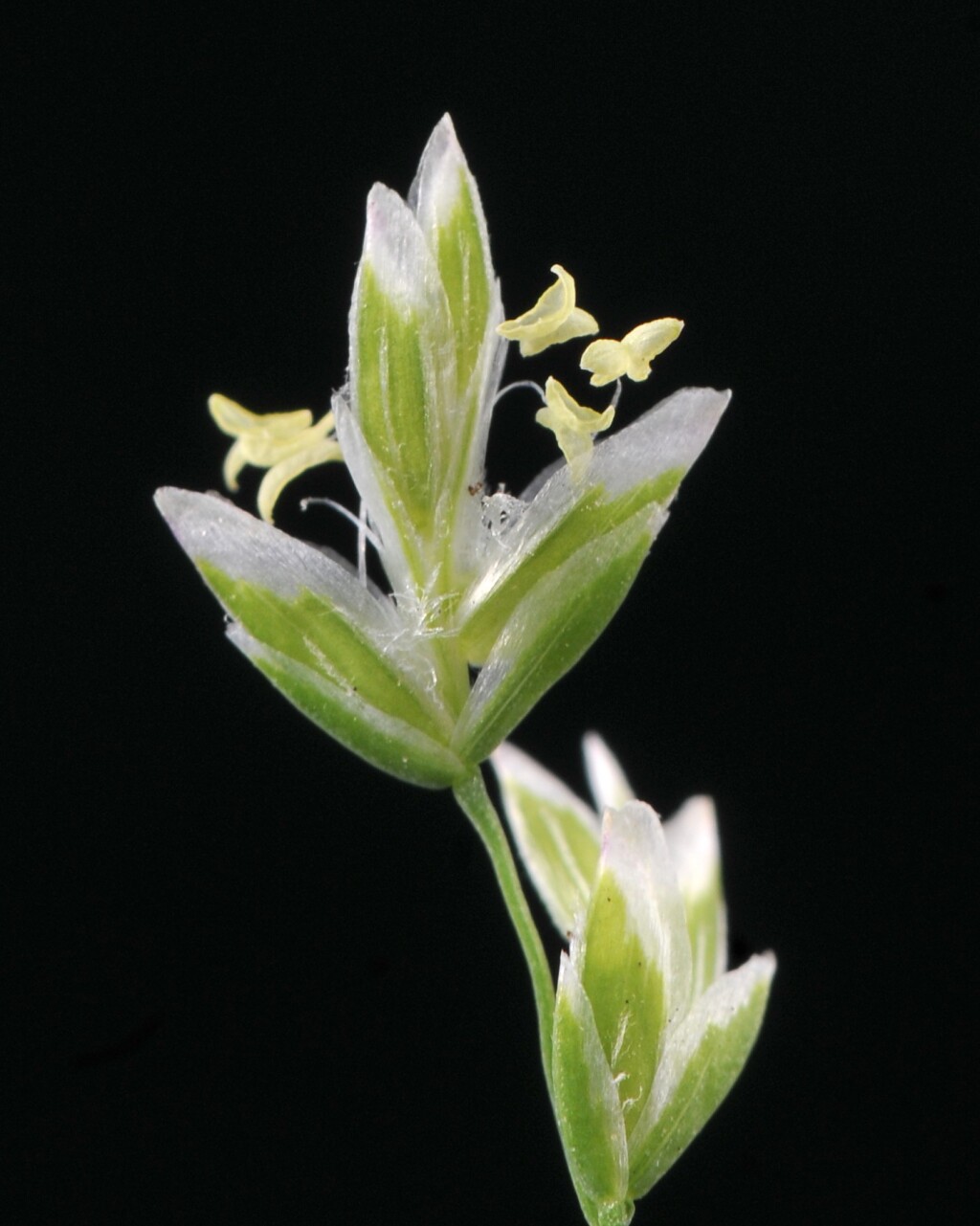Poa annua
L. Annual Meadow-grassVariable, bright green, glabrous, tufted annual; culms erect to procumbent, 2–30 cm high. Leaf-blades flat or channelled (folded when young) with boat-shaped tips, to 12 cm long and 5 mm wide; ligules whitish, thinly membranous, truncate, 2–5 mm long. Inflorescence an approximately ovoid panicle, to c 10 cm long and 6 cm wide. Spikelets mostly 3–6-flowered, 3.5–6 mm long; lower glume 1–3-nerved, 1.5–3 mm long; upper glume 3-nerved, 2–4 mm long; lemma 2.5–4 mm long, the 5 nerves usually hairy below c. midway, internerves glabrous; web absent; anthers 0.7–1.3 mm long. Flowers chiefly during winter and spring, but occasional flowering plants may be found throughout the year.
LoM, MuM, Wim, GleP, Brid, VVP, VRiv, RobP, MuF, GipP, OtP, WaP, Gold, CVU, GGr, DunT, NIS, EGL, EGU, WPro, HSF, HNF, OtR, Strz, MonT, HFE, VAlp. Naturalised in all States. Native to Europe and temperate Asia, widely naturalised elsewhere. A common weed of gardens, lawns and disturbed areas. In drier regions usually confined to irrigated land or margins of streams, billabongs etc.
Genetic studies have shown Poa annua to be tetraploid and of hybrid origin with Poa infirma as the maternal parent (Mao & Huff 2012).
Walsh, N.G. (1994). Poaceae. In: Walsh, N.G.; Entwisle, T.J., Flora of Victoria Vol. 2, Ferns and Allied Plants, Conifers and Monocotyledons, pp. 356–627. Inkata Press, Melbourne.
 Spinning
SpinningMao, Q.; Huff, D.R. (2012). The evolutionary origin of Poa annua L.. Crop Science 52: 1910–1922.





